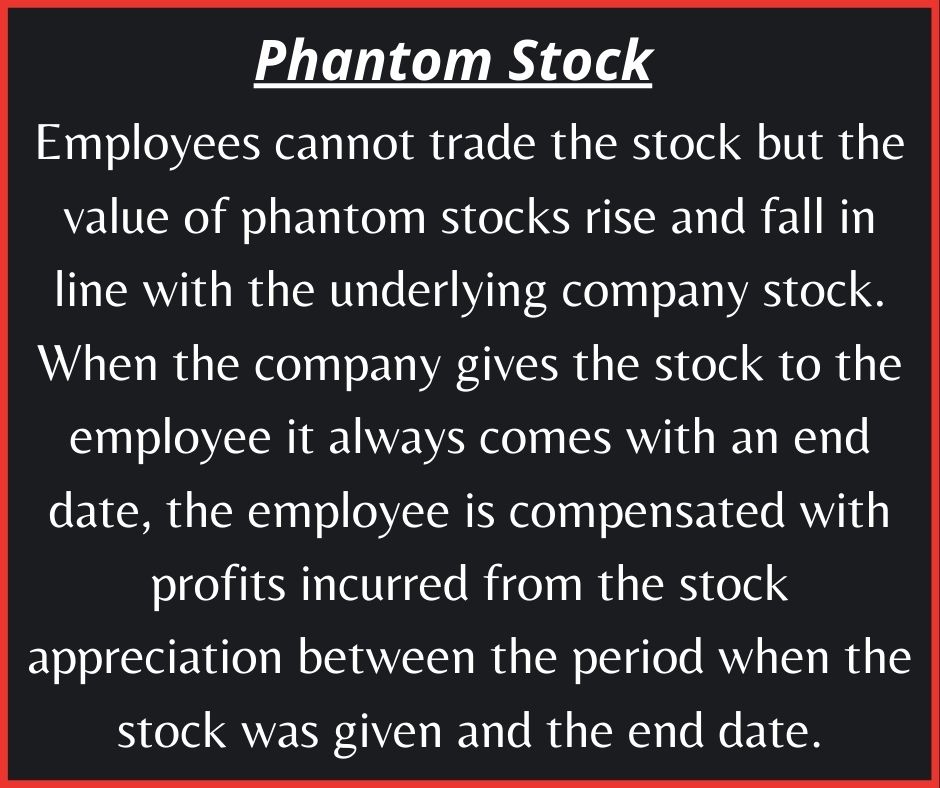Phantom Stock : Key points must be added in a Phantom Stock Agreement
- 6 October 2020 | 2290 Views | By Abhinav Mishra

Businesses choose various ways to reward their employees, especially those who serve important positions and/or have been with the company for a long period of time. One such way is through the distribution of phantom stocks.
Have you heard about phantom stocks? Do you own them? Strangely, many people are not aware of the term even though they are part of the finance industry. If you are one of them, it is time to learn everything about Phantom stocks.
What is a Phantom Stock?
The normal stock as you know trades in the open market and anyone having a Demat account can buy and sell it. Phantom stocks are different in that way, these are offered by companies to their employees, usually senior employees. Employees receive financial benefits of owning shares without actually having ownership of company stock. Confusing?
Employees cannot trade the stock but the value of phantom stocks rise and fall in line with the underlying company stock. When the company gives the stock to the employee it always comes with an end date, the employee is compensated with profits incurred from the stock appreciation between the period when the stock was given and the end date.
In recent times, a lot of companies have started including these in the total compensation package of senior employees. Earlier, it was done only by tech companies but now companies from other sectors have started doing it.
What does Shadow Stock mean?
In some countries like the USA, phantom stocks are also known as Shadow stocks.
What are phantom stock plans?
A phantom stock plan is an employee benefit plan that provides certain employees of the company many of the advantages of owning stock in the company without giving them actual stock. A company can implement phantom stocks via two plans – Appreciation only or Full value plan.
Appreciation only – In this plan, the employee only receives the stock price appreciation that the phantom stock might earn over a specific period.
Full value – In this type of deal, the employee receives the full value of the stock after the vesting period is over.
How does a phantom stock plan work?
The phantom stock plan should outline how many stocks are given to each employee. The company may choose to distribute a percentage (mostly by startups) or a certain number of units (listed companies). Either of these can be increased in installments.
Appreciation only plans – For example, if a company gives its employee 1000 phantom stock today and each stock costs $10, the total value of stocks the employee received will be $10,000. Let us say, the term of the agreement is of 5 years, meaning the employee must stay for the next 5 years to benefit fully from the phantom stock. This period is also known as the vesting period. After 5 years, let’s assume, the price of the company’s stock rises to $50. In the appreciation only plan, the employee receives the difference between the price of the stock when she received the phantom stock, and when the vesting period completes. For above example, she will receive $40 * 1000 = Rs $40000.
In case of Full value – In above example, the employee will receive $50 * 1000 = Rs $50000.
How do you value phantom stock?
If the company is a listed company, each phantom share an employee receives will value the same as the price of the stock in the stock market. However, if the company is not listed it can value the price of a single share based on third-party appraisal, book value, or formula value.
Is phantom stock are for employees?
Yes, phantom stocks are for employees. In most cases, the phantom stocks are only given to senior employees of the company.
What is the importance of Phantom stock?
At the end of every quarter, a company wants to show growth. Employees are a crucial part of this journey and act as the backbone of the company. With the distribution of phantom stocks, both the employer and employees benefits in the following ways:
Employees – The phantom stocks reward employees for the time and effort they put into the company. When the vesting period is over, the company give the cash equivalent of the shares as per the phantom stock plan. This motivates the employees to work harder and put extra effort to take the company to the new heights.
Employers – The major company decisions are taken by senior management. The longer a good employee stays with the company the better it is. Phantom stock gives senior management a reason to stay and help the company succeed.
Is Phantom Stock a good idea?
We have seen how phantom stocks help both the employer and the employer. When the plan is implemented successfully, it a good idea to distribute phantom stocks. However, it is not always a good idea to come up with a phantom stock plan. If the company is planning to issue them to a large number of employees, the basic idea of motivating a set of employees is defeated. If the vesting period is too long, it may not be too attractive for an employee. Here are some disadvantages of phantom stocks –
- Poor structure/plan can lead to bad results.
- If all the phantom stocks are distributed to many employees on the same date, it means they will mature on the same date. The company needs to have sufficient liquidity to make the payments at that point in time.
- Since it is not real equity, it may not be too attractive for some employees.
How is Phantom Stock Taxed?
The phantom stocks are taxed differently in different countries. For the employer the rule is the same in almost all major countries – The employer is liable to deduct tax on the price of phantom stocks settled. For employees, the structure is as below as per different countries:
United States of America – Employees are taxed when the benefit of the phantom stock is exercised i.e when the vesting period is over. The taxable income will be calculated from the value of the reward, reduced by any consideration. This taxable value shall form part of the ordinary income of the recipient.
United Kingdom – Employee does not have to pay any tax on the grant of a phantom stock but any payouts made under a phantom stock plan will be subject to income tax through PAYE (Pay as you earn system) and national insurance contributions (NICs).
India – At the time of exercise of Phantom Stock, it shall be taxed under salary (perquisites) as per the tax slab of the employee.
How do you make a Phantom Stock Plan?
Phantom stocks are a type of agreement between the company and the employee who receives it. So for a company, it is very important, before they start giving phantom stocks, they have a full-fledged plan. Though the planning may vary from company to company, below are some standard points company must consider before making a phantom stock plan:
Understanding what is being offered – A company needs to understand, as part of this contract it is promising certain employees cash payment when the term of the contract expires. The leadership is still the owner of the company but they are giving the feeling of ownership to some employees which in most cases is motivating. The plan should align with the culture leadership wants to create in the company.
The valuation – If you are a non-listed company, it is very important you do the proper valuation of the company at the time when you decide to distribute phantom stocks. You also have full control of what you are going to pay to the employees when the contract ends. Choose the valuation process wisely.
Plan to choose – Once the valuation is done, you will have to decide the plan. You can choose one of the two plans we have discussed or come up with your own. Also, you need to decide the percentage of equity that should be reserved for this plan.
Set a time frame – Decide the vesting period for the phantom stocks.
Check this interesting article on What are Bargain Stocks?
What are the restrictions on phantom stock plans?
There are no inherent requirements or restrictions regarding the use of phantom stocks which allows the company to use it however it chooses. Phantom stock can also be changed at the management’s discretion.
Why grant phantom stocks instead of actual equity stocks?
An important question comes to mind – What is the need for phantom stocks? Why can’t companies distribute the actual stocks? Here are some reasons why a company may not want to give equity shares:
- They don’t want to give so many employees shareholder rights, which may grant voting rights or other unforeseen minority rights, depending on state law.
- They want to avoid the legal fees that may come from additional agreements, like shareholder agreements.
- Companies may be concerned about what happens to the company shares given to employees that leave the company.
Read about our take on Stocks vs Bonds: The Investment Saga.










